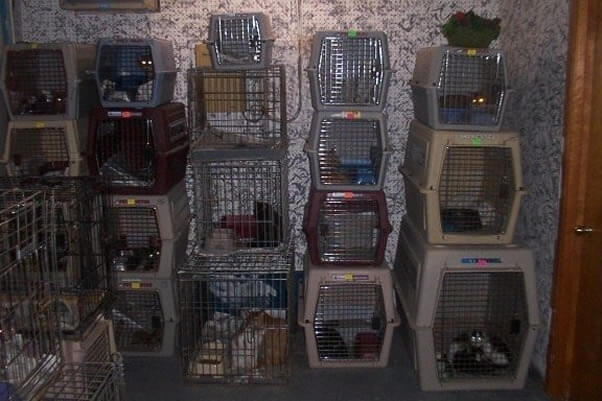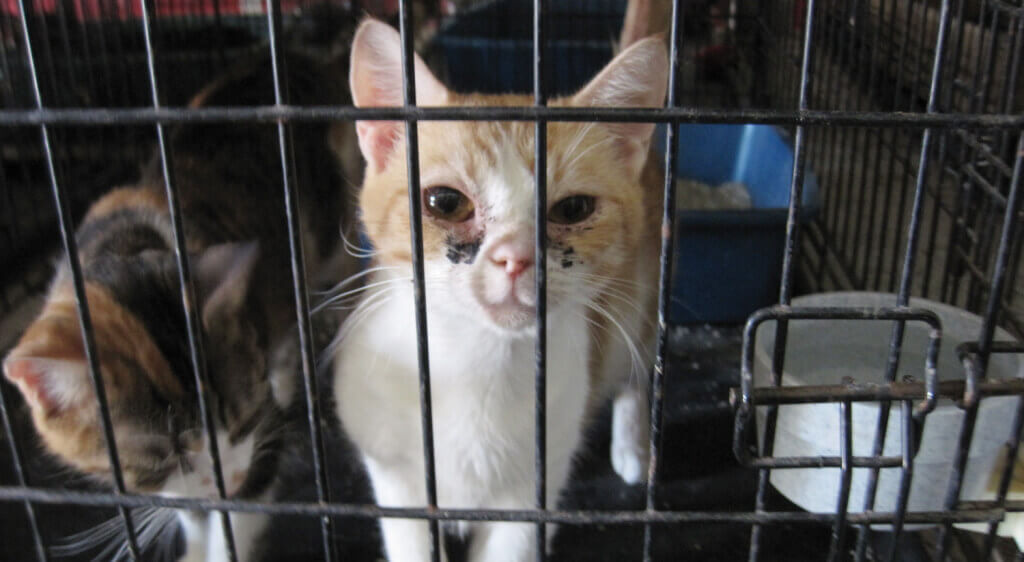Cat Rescued From Hoarder Goes to … Another Hoarder
How Star first became homeless is a mystery. The young black-and-white cat may have been born to an unaltered stray, or he may have slipped outside an open door and gotten lost. Maybe his family moved away and left him behind on the porch like an old couch. Somehow, he fell into the hands of a hoarder in West Virginia. Eventually, authorities got wind of the inhumane conditions there and seized the animals.
Star should have been safe then, but he wasn’t—far from it. Instead, the shelter, perhaps under pressure from “no-kill” proponents to boost its “save rates,” released the cat to a so-called “rescue” called Karen and Friends Animal Rescue.
But Karen and Friends was a rescue in name only. In actuality, it was another hoarding situation.

Karen and Friends’ founder, Amanda Woods, kept dozens of cats in a condemned house with no running water or electricity and without adequate food and water. After neighbors complained about the stench of the cats’ accumulated waste (“It can be pretty bad if the wind is blowing in the right direction,” said one), all the cats in the home were seized by authorities. By then, the cats’ health had deteriorated so badly that all of them had to be euthanized.
This case is far from unique. So-called “rescues” and “no-kill” shelters make up a quarter of the approximately 6,000 new hoarding cases reported in the U.S. each year. Recent cases include more than 30 animals—some of them sick, malnourished, and/or injured—who were seized from a “rescue” in Louisiana, nearly 700 animals who were confiscated from a facility billing itself as North Carolina’s “most successful no-kill shelter,” and various “rescues” in Arizona, Arkansas, Colorado, Connecticut, Florida, Georgia, Illinois, Maryland, New Hampshire, New Mexico, South Carolina, and Texas where neglected animals were found in filthy conditions.
Hoarders are animal abusers, pure and simple, yet because they drape themselves in the “rescue” or “no-kill” flag, they are often able to get away with abusing and neglecting animals—often for years—with little or no scrutiny.
And seemingly legitimate shelters aid and abet hoarders when, in an effort to achieve pie-in-the-sky “save rates,” they toss commonsense safeguards out the window and release animals to anyone who will take them, with no screening or follow-up. Animals are living beings, not just numbers on a page, and their safety must come first.

“No-kill” policies may sound appealing, but they often end up hurting animals like Star. Animals need exercise, companionship, socialization, clean living spaces, wholesome food, clean water, vet care, and love—things that are denied to them when they’re warehoused in cages for months or years on end. Such living conditions aren’t acceptable for our own animals, and they aren’t acceptable for homeless animals, either.
This post is part of a series exploring the problems associated with “no-kill” shelter policies. To learn more, please read our other posts on this issue:

